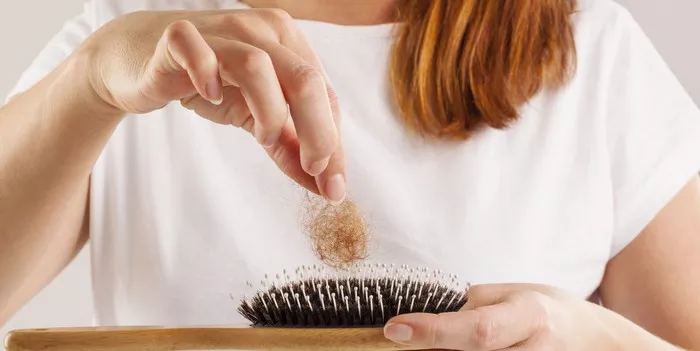Hair growth is a complex and dynamic process that occurs in four distinct stages. Each stage plays a crucial role in determining the length, thickness, and overall health of your hair. Understanding these stages can provide valuable insight into hair growth patterns, as well as how to care for your hair to promote optimal growth and appearance.
Stage 1: Anagen Phase
The first stage of hair growth is known as the anagen phase. This is the active growth phase during which hair follicles produce new hair. The duration of the anagen phase varies depending on factors such as genetics, age, and overall health, but it typically lasts anywhere from two to seven years.
During the anagen phase, cells in the hair follicle rapidly divide, leading to the formation of new hair shafts. As the hair grows, it pushes older hairs out of the follicle, causing them to shed naturally. The rate of hair growth during the anagen phase averages around half an inch per month, although this can vary from person to person.
Several factors can influence the duration of the anagen phase, including genetics, hormonal changes, and environmental factors. For example, hormonal fluctuations during pregnancy or menopause can affect the length of the anagen phase, leading to changes in hair growth patterns. Similarly, certain medical conditions or medications can also impact the duration of this stage.
To promote healthy hair growth during the anagen phase, it’s essential to maintain a balanced diet rich in vitamins, minerals, and protein. Adequate hydration and scalp care can also help support optimal hair growth and overall hair health.
Stage 2: Catagen Phase
Following the anagen phase, hair enters the catagen phase, also known as the transitional phase. This stage marks the end of active hair growth and the beginning of a transition period before the hair sheds. The catagen phase typically lasts for around two to three weeks.
During the catagen phase, the hair follicle shrinks and detaches from the dermal papilla, which is the structure that supplies nutrients to the hair follicle. As a result, the hair shaft becomes disconnected from its blood supply and stops growing. While the hair is still attached to the follicle, it is no longer actively growing and is considered to be in a resting state.
Although the catagen phase is relatively short compared to the anagen phase, it plays a crucial role in the hair growth cycle. This transitional period allows the hair follicle to renew itself and prepare for the next stage of growth. Without this phase, the hair follicle would not be able to undergo the necessary changes to support healthy hair growth over time.
While the catagen phase is a natural part of the hair growth cycle, certain factors can influence its duration. For example, stress, illness, or hormonal imbalances can disrupt the normal progression of the hair growth cycle, leading to premature shedding or prolonged periods of rest.
To support healthy hair growth during the catagen phase, it’s important to minimize stress, maintain a balanced diet, and avoid harsh styling practices that can damage the hair follicles. Additionally, regular scalp massages can help improve blood circulation to the scalp, which can promote healthier hair growth.
Stage 3: Telogen Phase
After the catagen phase comes the telogen phase, also known as the resting phase. During this stage, the hair follicle remains inactive while the old hair is shed to make way for new growth. The telogen phase typically lasts for around two to four months.
Unlike the catagen phase, where the hair follicle undergoes significant changes, the telogen phase is characterized by relative dormancy. The hair follicle remains in a resting state, and the hair shaft is gradually pushed out of the follicle by the growth of new hair underneath.
It’s important to note that during the telogen phase, only a small percentage of hair follicles are in the resting state at any given time. This ensures that hair growth remains continuous, with new hairs replacing those that are shed.
Several factors can influence the duration of the telogen phase, including genetics, age, and hormonal changes. For example, as we age, the duration of the telogen phase may increase, leading to slower overall hair growth and a higher likelihood of experiencing hair thinning or loss.
To support healthy hair growth during the telogen phase, it’s essential to maintain a healthy lifestyle and minimize stressors that can disrupt the hair growth cycle. Additionally, using gentle hair care products and avoiding excessive heat or chemical treatments can help protect the hair follicles and promote optimal hair growth.
Stage 4: Exogen Phase
The final stage of the hair growth cycle is known as the exogen phase, or shedding phase. During this stage, the old hair is shed from the scalp to make way for new growth. Unlike the shedding that occurs throughout the telogen phase, which is a natural part of the hair growth cycle, the exogen phase is characterized by the active shedding of hair.
While shedding is a normal part of the hair growth cycle, certain factors can influence the rate and extent of hair loss during the exogen phase. For example, hormonal imbalances, nutritional deficiencies, and medical conditions such as alopecia can disrupt the normal shedding process, leading to excessive hair loss or thinning.
To support healthy shedding during the exogen phase, it’s important to maintain a balanced diet rich in essential nutrients such as vitamins, minerals, and protein. Additionally, practicing good hair care habits, such as avoiding tight hairstyles and minimizing heat styling, can help reduce the risk of hair breakage and damage during the shedding process.
Conclusion
In conclusion, understanding the four stages of hair growth is essential for maintaining healthy, vibrant hair. By recognizing the role that each stage plays in the hair growth cycle and taking steps to support optimal growth and shedding, you can help ensure that your hair remains strong, resilient, and beautiful for years to come.


